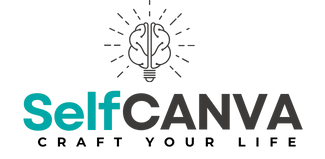In today’s fast-paced work world, mindfulness is key to staying sharp and productive. You might have felt overwhelmed by work, with too many distractions.
Workplace mindfulness is a great way to fight stress and improve your job performance. Simple desk exercises and mental tricks can make your workday smoother. These aren’t about long meditation sessions but quick, easy steps you can take at your desk.
Imagine being able to focus better, feel less stressed, and work more efficiently—all from your desk. This article will show you how to use mindfulness to make your workday better. These tips work whether you’re in an office or working from home, helping your mental health and career.
Are you ready to see how mindfulness can change your work life? We’ll look at desk exercises and strategies to keep you focused and energized all day.
Understanding Mindfulness in the Workplace
Workplace stress is a big problem today. Mindfulness helps employees deal with work’s demands. It makes work better by being present and aware.
Mindfulness is not just a trend. It’s a way to handle your feelings and thoughts at work. It means focusing on now without judging.
Defining Mindfulness
Mindfulness is all about:
- Being fully in the present
- Watching your thoughts without judgment
- Getting clear and balanced
Benefits of Mindfulness at Work
Mindfulness at work has many benefits. It makes work better and improves how you feel.
- Reduced Stress: It helps manage work pressure
- Enhanced Concentration: You focus better
- Better Decision Making: You think more clearly
Just 10 minutes of mindfulness a day can make work better and happier.
Adding mindfulness to your day makes work more balanced and rewarding.
The Importance of Staying Focused
In today’s fast-paced work environment, staying focused is tough. Workplace distractions can hurt your productivity and performance. Learning mindfulness techniques can help you stay on track.
How Distractions Derail Productivity
Digital notifications, open-plan offices, and constant communication create a perfect storm of interruptions. Research shows each distraction can cost up to 23 minutes of productive time. These interruptions make it hard to focus and complete tasks efficiently.
- Email and messaging notifications
- Colleague conversations
- Smartphone alerts
- Multitasking demands
Practical Concentration Techniques
Developing strong focus needs strategic mindfulness techniques at work. You can train your brain to ignore distractions and improve concentration with intentional practices.
- Create dedicated work blocks
- Use noise-canceling headphones
- Practice short meditation breaks
- Implement the Pomodoro technique
Mindfulness as a Concentration Booster
Mindfulness helps you focus by being present. By practicing present-moment awareness, you can resist workplace distractions better. Regular mindfulness exercises improve your brain’s response to interruptions, boosting focus and productivity.
Simple Desk Exercises for Mindfulness

Professionals can make their workday better with simple desk exercises. These quick practices help you manage stress, improve focus, and stay mentally clear. You don’t have to leave your desk.
Mindfulness training for professionals is easy and doesn’t need a lot of time or special gear. You can do these exercises right at your desk. They help you stay focused and productive all day.
Breathing Techniques
Breathing is a key tool for mindfulness. Try these simple techniques:
- Box Breathing: Inhale for 4 seconds, hold for 4 seconds, exhale for 4 seconds
- Diaphragmatic Breathing: Place one hand on your chest, breathe deeply into your stomach
- Counted Breaths: Count each breath cycle to maintain focus
Seated Stretching Practices
Desk-based stretches can help release physical tension and promote body awareness:
- Neck Rolls: Gently rotate your head in circular motions
- Shoulder Shrugs: Raise and lower shoulders to release tension
- Seated Spinal Twist: Rotate your upper body while seated
Quick Mindfulness Meditation
A brief meditation can reset your mental state in minutes. Close your eyes, focus on your breath, and let thoughts pass without judgment. Start with 2-3 minutes and gradually increase duration.
Remember, mindfulness is a skill that improves with consistent practice.
Creating a Mindful Workspace
Starting mindfulness at work begins with your space. Your desk is key to clear thinking and getting things done. A well-designed desk can change how you work and lower stress.
To make a mindful workspace, organize and design with care. Aim to create a space that helps you focus and keeps your mind clear.
Organizing Your Desk for Clarity
A tidy desk helps your mind stay sharp. Here are tips for making your desk a mindful space:
- Get rid of things you don’t need
- Choose simple desk items
- Have specific spots for your tools
- Try a digital filing system
Calming Elements to Add
Bring in things that calm your mind and help you focus:
- Small indoor plants to bring nature inside
- Desk items in soft, calm colors
- A small essential oil diffuser
- Personal items that motivate you
The Power of Natural Light
Natural light is crucial for mindfulness at work. Place your desk near windows if you can. It improves your mood, boosts productivity, and helps your body’s natural clock.
Your workspace is a reflection of your mental state – keep it intentional and calm.
Incorporating Mindfulness Breaks
Workplace stress can quickly drain your energy and productivity. Adding mindfulness to your daily routine can change your work life. It helps you stay mentally clear.
Intentional pauses during your workday can reset your mind and lower stress. These breaks don’t need a lot of time or complicated methods.
Scheduling Short Mindfulness Sessions
Quick, focused breaks can be very helpful. Here are some ideas:
- 5-minute breathing exercises between meetings
- Short meditation sessions during lunch breaks
- Micro-mindfulness moments at your desk
Using Apps to Support Mindfulness
Technology has great tools for reducing workplace stress. Check out these apps:
- Headspace
- Calm
- Insight Timer
Encouraging Team Mindfulness Practices
Building a team that practices mindfulness together can help everyone. Encourage your colleagues to join group meditation or share mindfulness tips. This creates a supportive work environment focused on mental health.
Small, consistent mindfulness practices can lead to significant workplace transformation.
Overcoming Challenges to Mindfulness at Work

Creating a mindfulness culture at work isn’t easy. You might face many obstacles that make it hard to keep up a mindfulness routine. Knowing these challenges is the first step to a more focused and balanced work place.
Workplace mindfulness can seem daunting. But, understanding common challenges helps you find ways to succeed.
Identifying Common Obstacles
- Limited time during busy workdays
- Skepticism from colleagues
- Personal doubts about mindfulness effectiveness
- Difficulty maintaining consistent practice
Strategies for Staying Committed
To stay committed to mindfulness at work, you need practical strategies:
- Start with short, manageable mindfulness sessions
- Set realistic expectations for your practice
- Track your progress and celebrate small victories
- Create reminders and scheduling prompts
Seeking Support from Colleagues
Building a supportive network can change your mindfulness journey. Engage colleagues who are interested, share your experiences, and start informal support groups. Mindfulness with others can make it more fun and lasting.
Remember, developing a mindfulness practice is a personal journey with collective potential.
Mindfulness and Team Collaboration
Workplace mindfulness is more than just for individuals. It’s a key to changing how teams work together. When teams practice mindfulness, they become more supportive, open in communication, and productive.
To build a mindful team culture, leaders need to make a plan and commit. How you bring mindfulness to work can really change how well your team does and how happy they are at work.
Building a Mindful Team Culture
Starting a mindful team culture means leaders need to lead by example. Here are some important steps:
- Practice mindfulness yourself
- Encourage open and honest talk
- Give space for team members to share
- Make mental health and feelings okay to talk about
Group Mindfulness Sessions
Using mindfulness in team-building can make teams stronger and better at working together. Some good ways to do this include:
- Short meditation before meetings
- Group breathing exercises
- Mindful listening workshops
- Reflection circles to talk about team challenges
Enhancing Communication Through Mindfulness
Mindfulness makes communication better by making team members more present, understanding, and focused. Active listening and emotional intelligence get better with mindfulness.
Mindfulness isn’t about being perfect—it’s about making room for understanding and connection.
Adding mindfulness to your team’s work can make your workplace more collaborative, supportive, and creative.
Measuring the Impact of Mindfulness
To really see how mindfulness helps at work, we need a smart way to measure it. By looking at certain numbers, we can show how mindfulness makes a difference in our workplaces.
There are many ways to check if mindfulness is working at work. These methods give us a full picture of how well the workplace is doing and how happy employees are.
Assessing Productivity Levels
Seeing how well people work is key to knowing if mindfulness is helping. Here are some important ways to check:
- Look at how many tasks people finish before and after starting mindfulness
- Watch how teams and individuals do
- See how fast projects get done
- Check if there are fewer mistakes
Employee Well-being Surveys
Surveys about how people feel at work are very important. They help us understand how mindfulness affects people’s minds. Ask questions about:
- How stressed they feel
- If they’re happy with their job
- How strong they are emotionally
- If they feel they have a good balance between work and life
Long-term Benefits of Mindfulness
Mindfulness at work has big benefits that last a long time. These include keeping employees longer, better teamwork, and a happier workplace.
Mindfulness is not just a quick fix. It’s a big change for making work better and happier.
By always checking and recording these benefits, you’ll make a strong case for mindfulness at work.
Mindfulness Beyond the Desk

Mindfulness practices for employees don’t end when you leave work. Adding mindfulness to your daily life changes how you see work and personal time. It helps you manage stress and improve well-being in a holistic way.
Starting mindfulness in your daily routine is easy. It doesn’t need a lot of time or special skills. Just a few mindful moments can make a big difference in your life.
Extending Mindfulness to Daily Life
- Practice mindful breathing during morning routines
- Use meal times as opportunities for present-moment awareness
- Engage in mindful listening during conversations
- Create short meditation breaks during household chores
Mindful Commuting Strategies
Your daily commute can be a great chance to practice mindfulness. Instead of seeing it as lost time, use it for growth and relaxation.
- Practice deep breathing techniques while in transit
- Use guided meditation apps during your journey
- Observe your surroundings without judgment
- Disconnect from digital devices periodically
Balancing Work and Personal Wellness
Mindfulness helps employees set clear boundaries between work and personal life. It reduces stress, improves emotional control, and helps you live a more balanced life.
Mindfulness is not about perfection, but about consistent, gentle awareness.
Starting mindfulness is a slow process. Begin small, be patient, and see how it changes your life.
Resources for Mindfulness Exploration
Discovering the right mindfulness resources for workplace stress can change your work life. This guide will help you find the best tools and materials for your mindfulness journey.
Exploring mindfulness doesn’t have to be hard. The key is finding resources that match your personal and work needs.
Recommended Books and Articles
Start with these powerful reads for deep insights into mindfulness at work:
- “Mindful Work” by David Gelles – A deep dive into mindfulness in work settings
- “Search Inside Yourself” by Chade-Meng Tan – Google’s take on workplace mindfulness
- Harvard Business Review articles on mindfulness and productivity
Online Courses and Workshops
“The best investment you can make is in yourself” – Warren Buffett
Boost your mindfulness skills with these top online learning platforms:
- Coursera’s Mindfulness and Wellbeing Course
- LinkedIn Learning’s Stress Management Techniques
- Udemy’s Workplace Mindfulness Workshops
Mindfulness Apps to Consider
Technology can help a lot with managing work stress. Check out these top mindfulness apps:
- Headspace – Guided meditation for professionals
- Calm – Helps with stress and sleep
- Insight Timer – Free meditation resources
Your mindfulness journey is special. These resources offer flexible ways to manage stress and boost focus at work.
Inspiring Mindfulness Success Stories
Mindfulness training has changed how companies work. It has made workplaces better for everyone. Real stories show how mindfulness helps people do their jobs better and makes work places better for everyone.
People from all kinds of jobs have seen big benefits from mindfulness. Their stories show how clear thinking and focus can help in tough work situations.
Personal Transformations
- Sarah Rodriguez, a marketing executive at Google, reduced stress by 40% through daily meditation
- Michael Chen, tech startup leader, improved team communication using mindfulness techniques
- Elena Martinez, healthcare administrator, enhanced decision-making skills with mindfulness training for professionals
Companies Leading Workplace Mindfulness
Some companies are really into mindfulness:
- Salesforce: Offers meditation rooms and mindfulness workshops
- Intel: Implemented company-wide mindfulness programs
- Aetna: Provides mindfulness training that reduced healthcare costs
“Mindfulness isn’t just a trend—it’s a critical skill for modern professionals seeking sustainable success.”
These stories show mindfulness is more than just a wellness thing. It’s a smart way to make work better, happier, and more effective for everyone.
Conclusion: Embracing Mindfulness at Work
Your journey into mindfulness at work is a big step towards better professional well-being. You’ve learned how to focus better, reduce stress, and make your workplace more balanced. These strategies are real tools that can change how you work every day.
Starting mindfulness doesn’t mean you have to make huge changes. Small, regular practices can make a big difference in your job. Try simple desk exercises, breathing techniques, and mindful breaks to boost your productivity and clear your mind. Just start small and keep working on your growth.
Mindfulness at work is not just a trend; it’s a lasting way to grow professionally. As you keep practicing mindfulness, remember that it takes time and effort. Every mindful moment you take is an investment in your future, making your work more fulfilling and effective.
Reflecting on Your Mindfulness Journey
Think about what you’ve learned and how you’ve grown. Your mindfulness journey will keep changing as you try new things. Be patient with yourself, stay open to new ideas, and keep growing professionally.
Next Steps for Implementing Mindfulness
Start by picking one or two techniques that you like. Make a simple daily routine, like a five-minute breathing exercise or a quick meditation at lunch. As you get better, add more mindfulness tools to your collection. Watch how your work and well-being improve over time.

